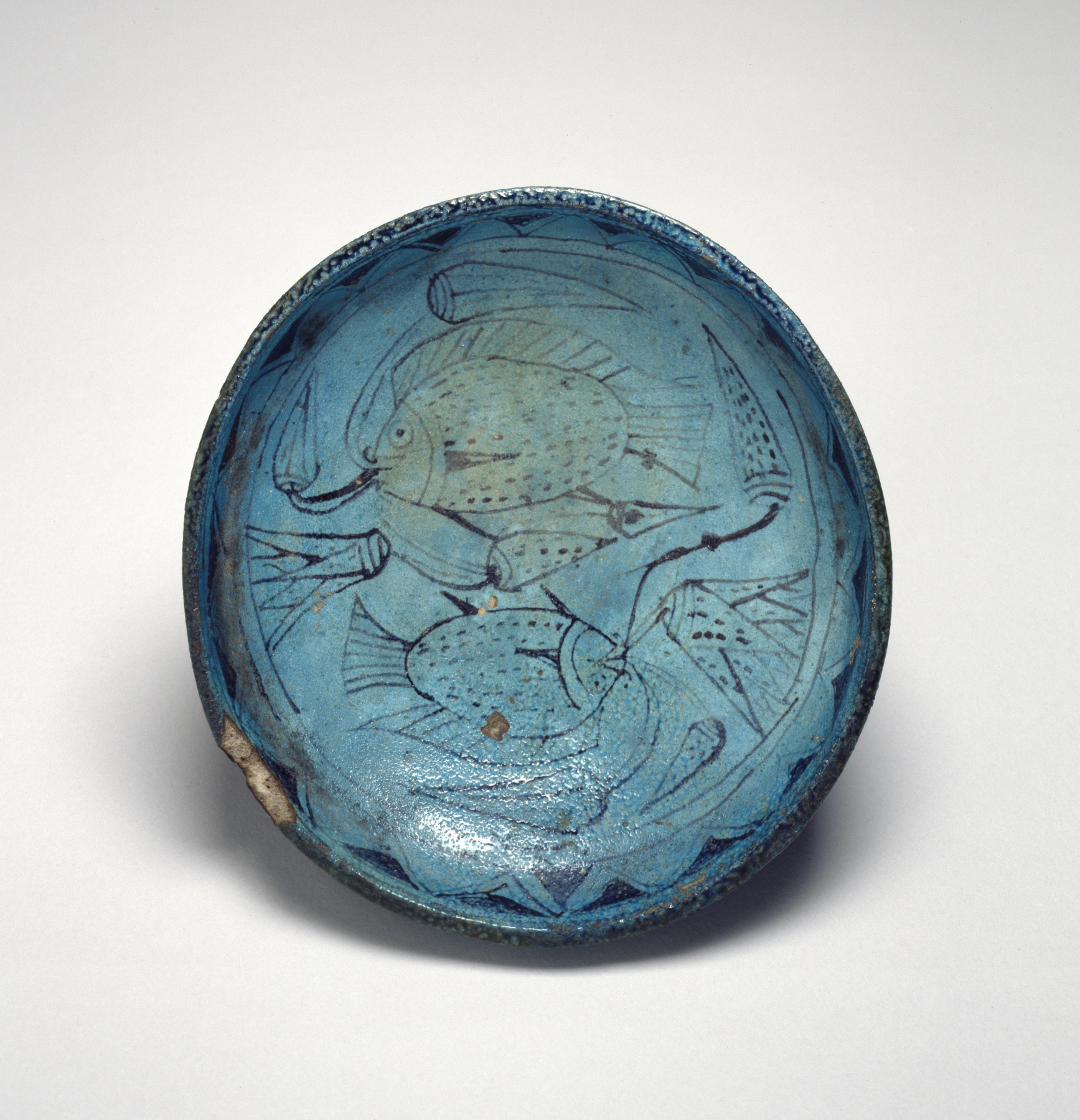Bowl with Fish and Lotuses
(Ancient Egypt and Nubia )
Shallow faience bowls of this type were particularly popular during the early to mid-18th Dynasty. Faience was a commonly used material in Egypt; it was made from silica--found for example in quartz pebbles, sand, or lime--and formed in a mold. Its blue or turquoise glaze came from inclusions of copper as a colorant. This bowl was molded over a hemispherical form and then glazed and fired. The dark purple decoration, often added to monochrome faience pieces, was painted before firing with a manganese-based pigment.
These vessels (sometimes described as "marsh bowls") are typically embellished with aquatic imagery with allusions to fertility, such as tilapia fish, lotuses, papyrus umbels, buds on stems, and pools of water. The bright blue of faience, as well as the aquatic motifs adorning these bowls is associated with the life-giving qualities of cool, fresh water. The blue lotus (Nymphaea caerulea), and the tilapia fish (Tilapia nilotica) are emblematic of such imagery. Here, two fish carry lotus stems with buds and opened blossoms in their mouths. The ornamentation relates to the powerful themes of rebirth and regeneration.
Provenance
Provenance (from the French provenir, 'to come from/forth') is the chronology of the ownership, custody, or location of a historical object.
Flinders Petrie, 1890, by purchase in Cairo; Henry Wallis, after 1890; Rev. William MacGregor, Tamworth, Staffordshire, by 1898; Sale, Sotheby, Wilkinson & Hodge, London, June 26-29 and July 4-6, 1922, no. 257; Dikran Kelekian, Paris and New York, 1922, by purchase; Henry Walters, Baltimore, 1923, by purchase; Walters Art Museum, 1931, by bequest.
Exhibitions
| 2013-2014 | Egypt’s Mysterious Book of the Faiyum. The Walters Art Museum, Baltimore. |
| 1988 | Through Ancient Eyes: Portraiture in Ancient Egypt. Birmingham Museum of Art, Birmingham. |
| 1963 | Life and Art in Ancient Egypt. The Detroit Institute of Arts, Detroit. |
Conservation
| Date | Description | Narrative |
|---|---|---|
| 8/24/1998 | Examination | survey |
Geographies
Egypt, Western Thebes
(Place of Origin)
Egypt (Place of Discovery)
Measurements
H: 1 3/4 x Diam: 5 1/2 in. (4.4 x 14 cm)
Credit Line
Acquired by Henry Walters, 1923
Location in Museum
Not on view
Accession Number
In libraries, galleries, museums, and archives, an accession number is a unique identifier assigned to each object in the collection.
In libraries, galleries, museums, and archives, an accession number is a unique identifier assigned to each object in the collection.
48.400


